This is a version of a talk that I gave at the “In Progress” event, staged by ‘It’s Nice That‘ magazine.
It builds on some thoughts that I’ve spoken about at some other events in 2011, but I think this version put it forward in the way I’m happiest with.
Having said that, I took the name of the event literally – it’s a bit of a work-in-progress, still.
It might more properly be entitled ‘Pets & Pot-plants’ rather than ‘Gardens & Zoos’ – but the audience seemed to enjoy it, and hopefully it framed some of the things we’re thinking about and discussing in the studio over the last year or so, as we’ve been working on http://bergcloud.com and other projects looking at the near-future of connected products.
And – with that proviso… Here it is.
Let me introduce a few characters…
This is my frying pan. I bought it in Helsinki. It’s very good at making omelettes.
This is Sukie. She’s a pot-plant that we adopted from our friend Heather’s ‘Wayward Plants‘ project, at the Radical Nature exhibit at the Barbican (where “In Progress” is!)
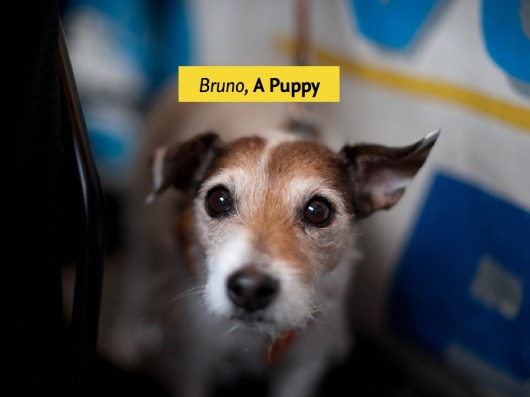
This is a puppy – we’ll call him ‘Bruno’.
I have no idea if that’s his name, but it’s from our friend Matt Cottam’s “Dogs I Meet” flickr set, and Matt’s dog is called Bruno – so it seemed fitting.
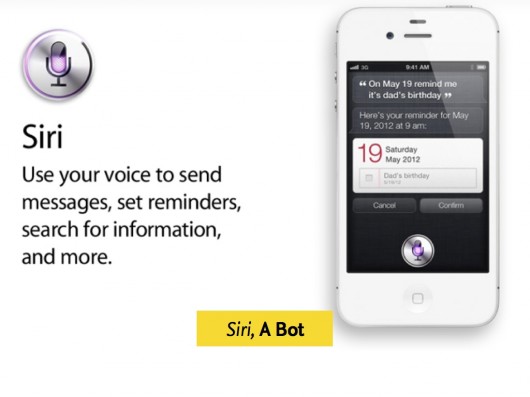
And finally, this is Siri – a bot.
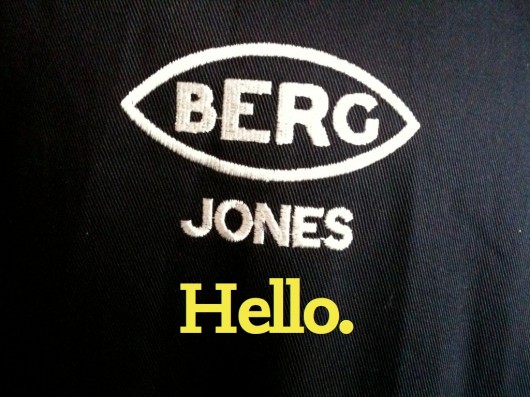
And, I’m Matt Jones – a designer and one of the principals at BERG, a design and invention studio.
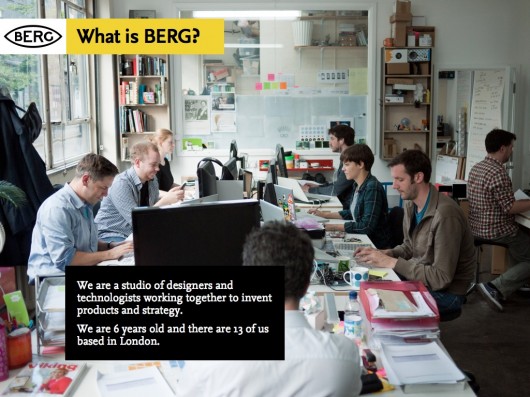
There are currently 13 of us – half-technologists, half-designers, sharing a room in East London where we invent products for ourselves and for other people – generally large technology and media companies.
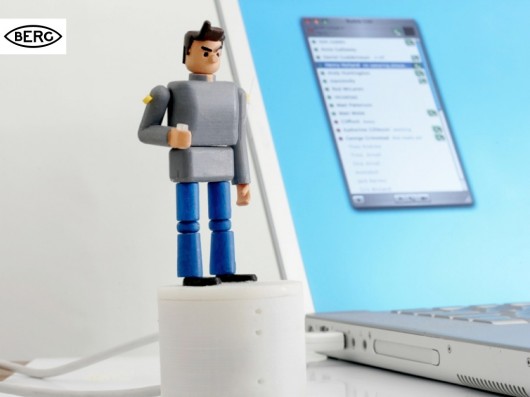
This is Availabot, one of the first products that we designed – it’s a small connected product that represents your online status physically…
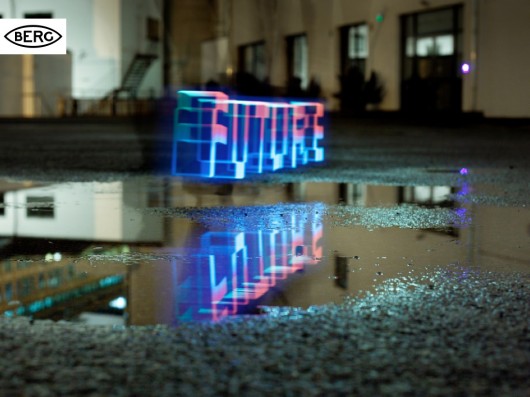
But I’m going to talk today about the near-future of connected products.
And it is a near-future, not far from the present.
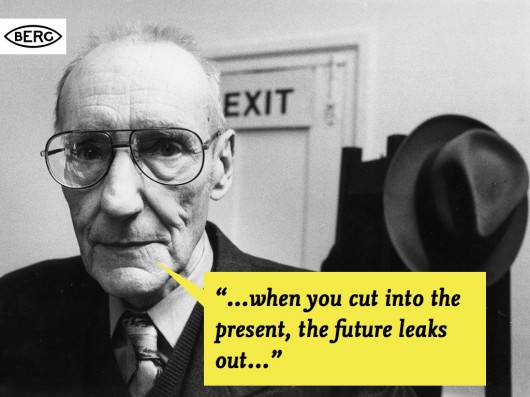
In fact, one of our favourite quotes about the future is from William Burroughs: “When you cut into the present, the future leaks out…“
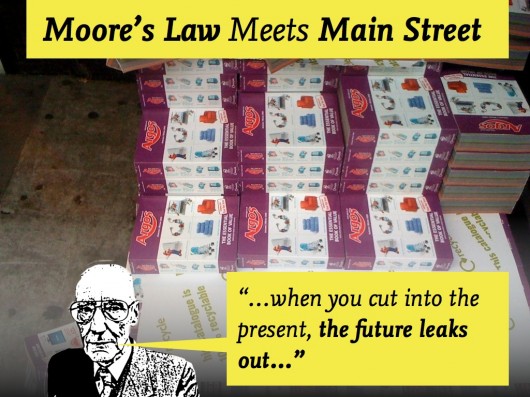
A place we like to ‘cut into the present’ is the Argos catalogue! Matt Webb’s talked about this before.
It’s really where you see Moore’s Law hit the high-street.
Whether it’s toys, kitchen gear or sports equipment – it’s getting hard to find consumer goods that don’t have software inside them.
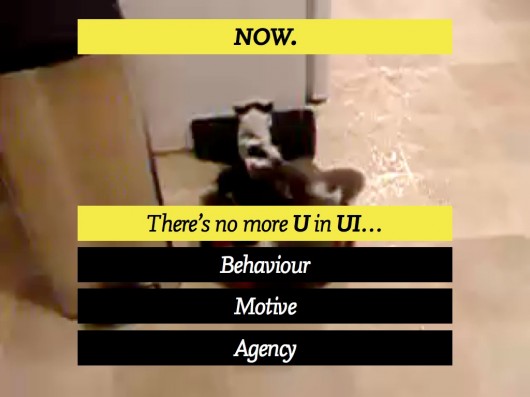
This is near-future where the things around us start to display behaviour – acquiring motive and agency as they act and react to the context around them according to the software they have inside them, and increasingly the information they get from (and publish back to) the network.
In this near-future, it’s very hard to identify the ‘U’ in UI’ – that is, the User in User-Interface. It’s not so clear anymore what these things are. Tools… or something more.
Of course, I choose to illustrate this slightly-nuanced point with a video of kittens riding a Roomba that Matt Webb found, so you might not be convinced.
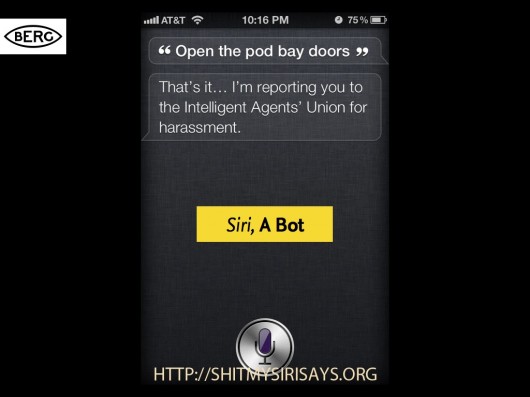
However, this brings us back to our new friends, the Bots.
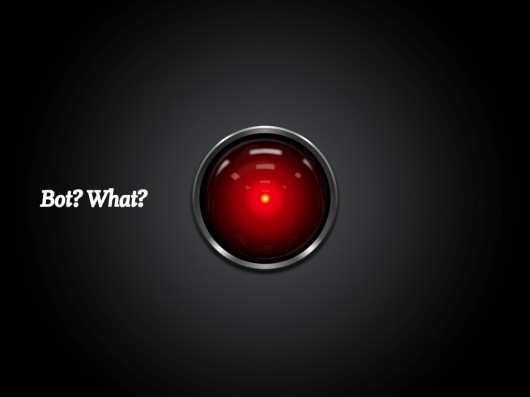
By bot – I guess I mean a piece of software that displays a behaviour, that has motive and agency.
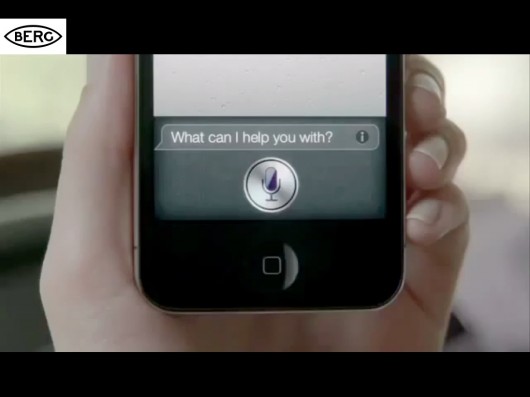
Let me show a clip about Siri, and how having bots in our lives might affect us [Contains Strong Language!]
Perhaps, like me – you have more sympathy for the non-human in that clip…
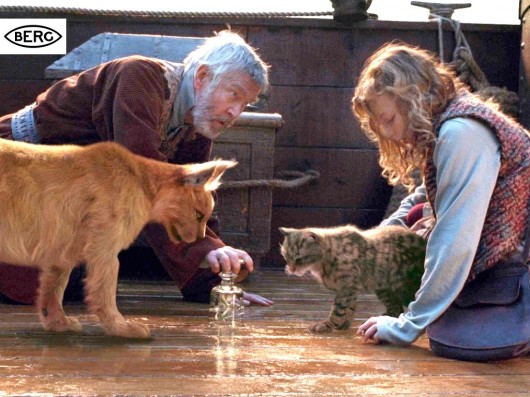
But how about some other visions of what it might be like to have non-human companions in our lives? For instance, the ‘daemons’ of Phillip Pullman’s ‘Dark Materials‘ trilogy. They are you, but not you – able to reveal things about you and reveal things to you. Able to interact naturally with you and each other.
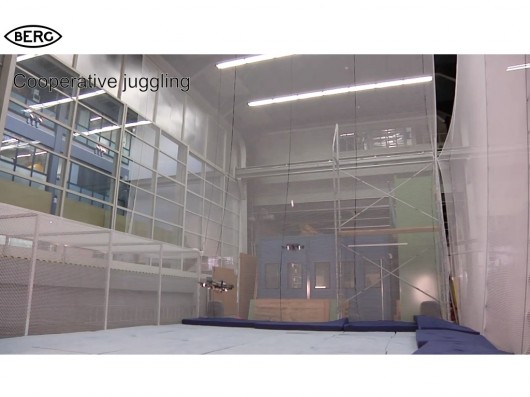
Creatures we’ve made that play and explore the world don’t seem that far-fetched anymore. This is a clip of work on juggling robot quadcopters by ETH Zurich.
Which brings me back to my earlier thought – that it’s hard to see where the User in User-Interfaces might be. User-Centred Design has been the accepted wisdom for decades in interaction design.
I like this quote that my friend Karsten introduced me to, by Prof Bertrand Meyer (coincidentally at professor at ETH) that might offer an alternative view…
A more fruitful stance for interaction design in this new landscape might be that offered by Actor-Network Theory?
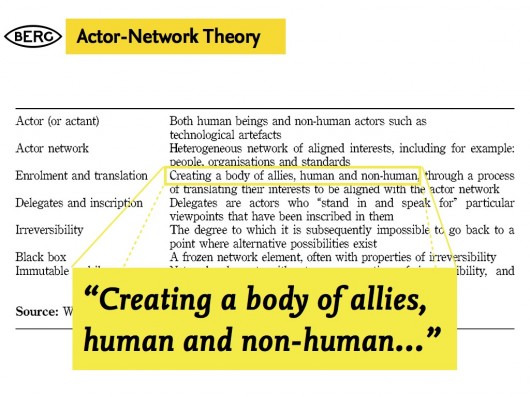
I like this snippet from a formulation of ANT based on work by Geoff Walsham et al.
“Creating a body of allies, human and non-human…”
Which brings me back to this thing…
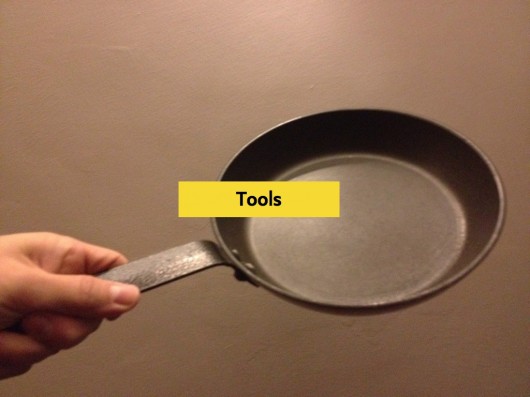
Which is pretty unequivocally a tool. No motive, no agency. The behaviour is that of it’s evident, material properties.
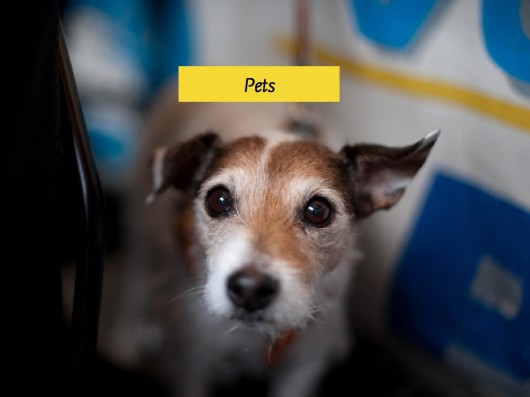
Domestic pets, by contrast, are chock-full of behaviour, motive, agency. We have a model of what they want, and how they behave in certain contexts – as they do of us, we think.
We’ll never know, truly of course.
They can surprise us.
That’s part of why we love them.
Even though we might give them names, and have an idea of their ‘motive’ and behaviour, they have little or no direct agency. They move around by getting us to move them around, by thriving or wilting…
And – this occurred to me while doing this talk – what are houseplants for?
Let’s leave that one hanging for a while…
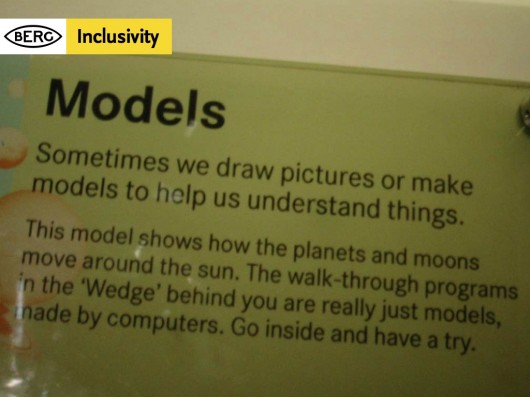
And come back to design – or more specifically – some of the impulses beneath it. To make things, and to make sense of things. This is one of my favourite quotes about that. I found it in an exhibition explaining the engineering design of the Sydney Opera House.
Making models to understand is what we do as we design.
And, as we design for slightly-unpredictable, non-human-centred near-futures we need to make more of them, and share them so we can play with them, spin them round, pick them apart and talk about what we want them to be – together.
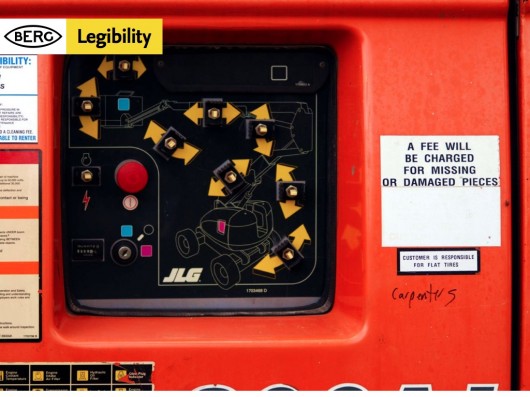
I’ll just quickly mention some of the things we talk about a lot in our work. The things we think are important in the models, and designs we make for connected products. The first one is legibility. That the product or service presents a readable, evident model of how it works to the world on it’s surface. That there is legible feedback, and you can quickly construct a theory how it works through that feedback.

One of the least useful notions you come up against, particularly in technology companies, is the stated ambition that the use of products and services should be ‘seamless experiences’.
Matthew Chalmers has stated (after Mark Weiser, one of the founding figures of ‘ubicomp’) that we need to design “seamful systems, with beautiful seams”
Beautiful seams attract us to the legible surfaces of a thing, and allow our imagination in – so that we start to build a model in our minds (and appreciate the craft at work, the values of the thing, the values of those that made it, and how we might adapt it to our values – but that’s another topic)
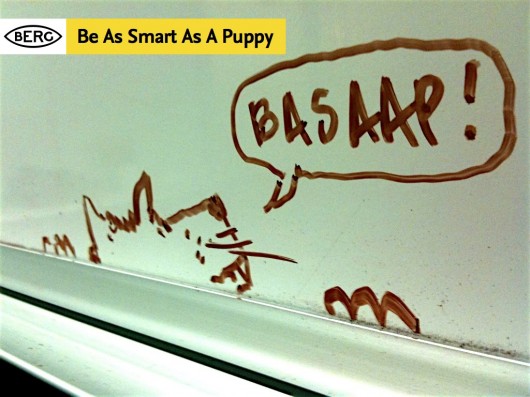
Finally – this guy – who pops up a lot on whiteboards in the studio, or when we’re working with clients.
B.A.S.A.A.P. is a bit of an internal manifesto at BERG, and stands for Be As Smart As A Puppy – and it’s something I’ve written about at length before.
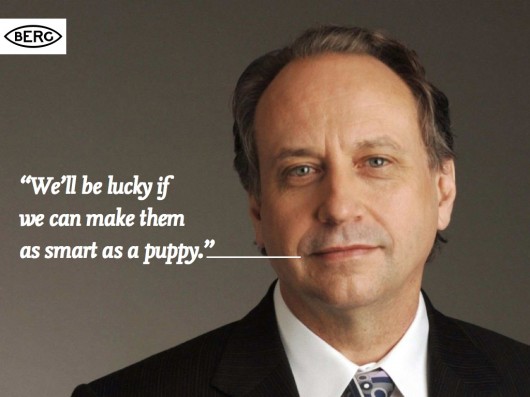
It stems from something robotics and AI expert Rodney Brooks said… that if we put the fifty smartest people in a room for fifty years, we’d be luck if we make AIs as smart as a puppy.
We see this an opportunity rather than a problem!
We’ve made our goal to look to other models of intelligence and emotional response in products and services than emulating what we’d expect from humans.
Which is what this talk is about. Sort-of.
But before we move on, a quick example of how we express these three values in our work.
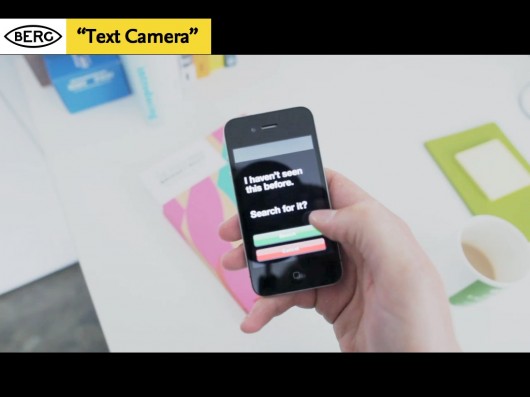
“Text Camera” is a very quick sketch of something that we think illustrates legibility, seamful-ness and BASAAP neatly.
Text Camera is about making the inputs and inferences the phone sees around it to ask a series of friendly questions that help to make clearer what it can sense and interpret. It kind of reports back on what it sees in text, rather through a video feed.
Let me explain one of the things it can do as an example. Your smartphone camera has a bunch of software to interpret the light it’s seeing around you – in order to adjust the exposure automatically.
So, we look to that and see if it’s reporting ‘tungsten light’ for instance, and can infer from that whether to ask the question “Am I indoors?”.
Through the dialog we feel the seams – the capabilities and affordances of the smartphone, and start to make a model of what it can do.
So next, I want to talk a little about a story you might be familiar with – that of…

I hope that last line doesn’t spoil it for anyone who hasn’t seen it yet…
But – over the last year I’ve been talking with lot to people about a short scene in the original 1977 Star Wars movie ‘A New Hope’ – where Luke and his Uncle Owen are attempting to buy some droids from the Jawas that have pulled up outside their farmstead.
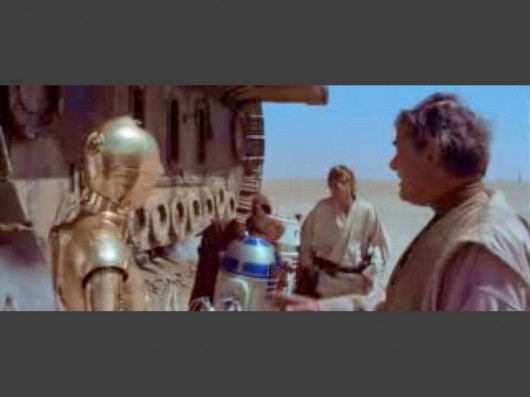
I’ve become a little obsessed with this sequence – where the droids are presented like… Appliances? Livestock?
Or more troublingly, slaves?
Luke and Uncle Owen relate to them as all three – at the same time addressing them directly, aggressively and passive-aggressively. It’s such a rich mix of ways that ‘human and non-human actors’ might communicate.
Odd, and perhaps the most interesting slice of ‘science-fiction’ in what otherwise is squarely a fantasy film.
Of course Artoo and Threepio are really just…
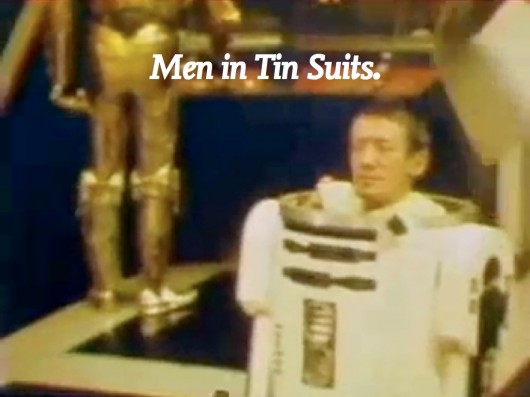
Men in tin-suits, but our suspension of belief is powerful! Which brings me to the next thing we should quickly throw into the mix of the near-future…
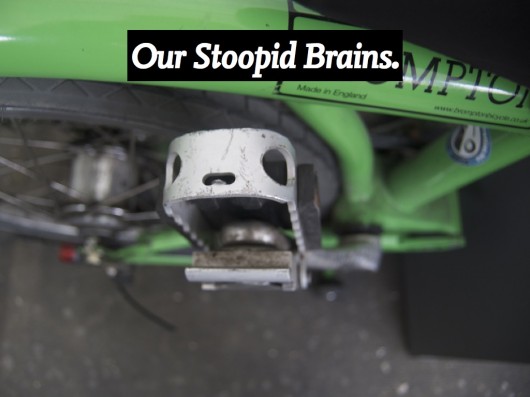
This is the pedal of my Brompton bike. It’s also a yapping dog (to me at least)
Our brains are hard-wired to see faces, it’s part of a phenomena called ‘Pareidolia‘
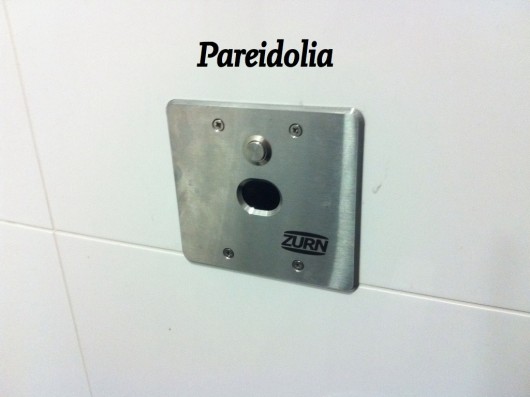
It’s something we’ve talked about before on the BERGblog, particularly in connection with Schoolscope. I started a group on flickr called “Hello Little Fella” to catalogue my pareidolic-excesses (other facespotting groups are available).
This little fella is probably my favourite.
He’s a little bit ill, and has a temperature.
Anyway.
The reason for this particular digression is to point out that one of the prime materials we work with as interaction designers is human perception. We try to design things that work to take advantage of its particular capabilities and peculiarities.
I’m not sure if anyone here remembers the Apple Newton and the Palm Pilot?
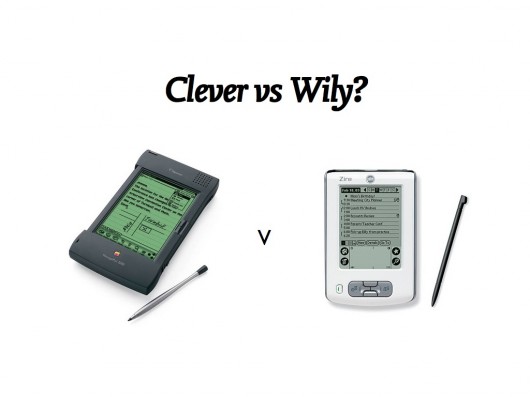
The Newton was an incredible technological attainment for it’s time – recognising the user’s handwriting. The Palm instead forced us to learn a new type of writing (“Graffiti“).
We’re generally faster learners than our technology, as long as we are given something that can be easily approached and mastered. We’re more plastic and malleable – what we do changes our brains – so the ‘wily’ technology (and it’s designers) will sieze upon this and use it…
All of which leaves me wondering whether we are working towards Artificial Empathy, rather than Artificial Intelligence in the things we are designing…
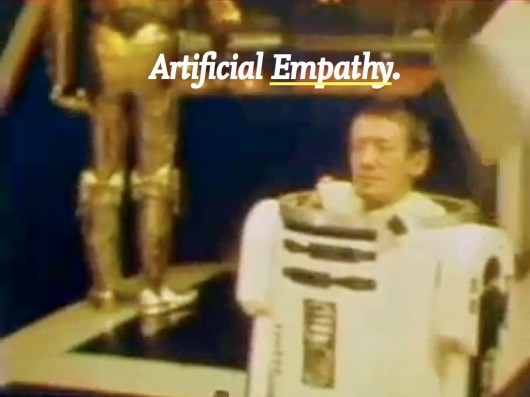
If you’ve seen this video of ‘Big Dog’, an all-terrain robot by Boston Dynamics – and you’re anything like me – then you flinch when it’s tester kicks it.
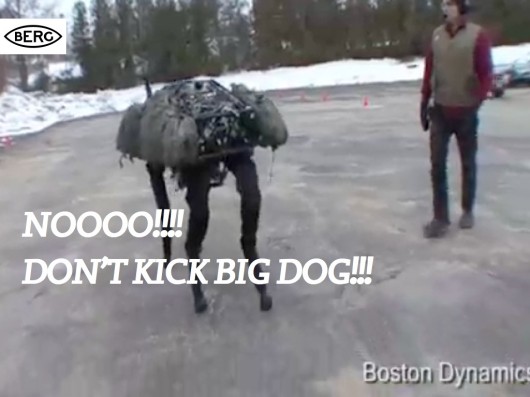
To quote from our ‘Artificial Empathy’ post:
Big Dog’s movements and reactions – it’s behaviour in response to being kicked by one of it’s human testers (about 36 seconds into the video above) is not expressed in a designed face, or with sad ‘Dreamworks’ eyebrows – but in pure reaction – which uncannily resembles the evasion and unsteadiness of a just-abused animal.
Of course, before we get too carried away by artificial empathy, we shouldn’t forget what Big Dog is primarily designed for, and funded by…
Anyway – coming back to ‘wily’ tactics, here’s the often-referenced ‘Uncanny Valley’ diagram, showing the relationship between ever-more-realistic simulations of life, particularly humans and our ‘familiarity’ with them.
Basically, as we get ever closer to trying to create lifelike-simulations of humans, they start to creep us out.
It can perhaps be most neatly summed up as our reaction to things like the creepy, mocapped synthespians in the movie Polar Express…
The ‘wily’ tactic then would be to stay far away from the valley – aim to make technology behave with empathic qualities that aren’t human at all, and let us fill in the gaps as we do so well.
Which, brings us back to BASAAP, which as Rodney Brooks pointed out – is still really tough.
Bruno’s wild ancestors started to brute-force the problem of creating artificial empathy and a working companion-species relationship with humans through the long, complex process of domestication and selective-breeding…
…from that point the first time these kind of eyes were made towards scraps of meat held at the end of a campfire somewhere between 12-30,000 years ago…
Some robot designers have opted to stay on the non-human side of the uncanny valley, notably perhaps Sony with AIBO.
Here’s an interesting study from 2003 that hints a little at what the effects of designing for ‘artificial empathy’ might be.
We’re good at holding conflicting models of things in our heads at the same time it seems. That AIBO is a technology, but that it also has ‘an inner life’.
Take a look at this blog, where an AIBO owner posts it’s favourite places, and laments:
“[he] almost never – well, make it never – leaves his station these days. It’s not for lack on interest – he still is in front of me at the office – but for want of preservation. You know, if he breaks a leg come a day or a year, will Sony still be there to fix him up?”
(One questioner after my talk asked: “What did the 25% of people who didn’t think AIBO was a technological gadget report it to be?” – Good question!)
Some recommendations of things to look at around this area: the work of Donna Haraway, esp. The Companion Species Manifesto.
Also, the work of Cynthia Brezeal, Heather Knight and Kacie Kinzer – and the ongoing LIREC research project that our friend Alexandra Deschamps-Sonsino is working with, that’s looking to studies of canine behaviour and companionship to influence the design of bots and robots.
In science-fiction there’s a long, long list that could go here – but for now I’ll just point to the most-affecting recent thing I’ve read in the area, Ted Chiang’s novella “The Lifecycle of Software Objects” – which I took as my title for a talk partly on this subject at UX London earlier in the year.
In our own recent work I’d pick out Suwappu, a collaboration with Dentsu London as something where we’re looking to animate, literally, toys with an inner life through a computer-vision application that recognises each character and overlays dialogue and environments around them.
I wonder how this type of technology might develop hand-in-hand with storytelling to engage and delight – while leaving room for the imagination and empathy that we so easily project on things, especially when we are young.
Finally, I want to move away from the companion animal as a model, back to these things…
I said we’d come back to this! Have you ever thought about why we have pot plants? What we have them in the corners of our lives? How did they get there? What are they up to?!?
(Seriously – I haven’t managed yet to find research or a cultural history of how pot-plants became part of our home life. There are obvious routes through farming, gardening and cooking – but what about ornamental plants? If anyone reading this wants to point me at some they’d recommend in the comments to this post, I’d be most grateful!)
Take a look at this – one of the favourite finds of the studio in 2011 – Sticky Light.
It is very beautifully simple. It displays motive and behaviour. We find it fascinating and playful. Of course, part of it’s charm is that it can move around of its own volition – it has agency.
Pot-plants have motives (stay alive, reproduce) and behaviour (grow towards the light, shrivel when not watered) but they don’t have much agency. They rely on us to move them into the light, to water them.
Some recent projects have looked to augment domestic plants with some agency – Botanicalls by Kati London, Kate Hartman, Rebecca Bray and Rob Faludi equips a plant not only with a network connection, but a twitter account! Activated by sensors it can report to you (and its followers) whether it is getting enough water. Some voice, some agency.
(I didn’t have time to mention it in the talk, but I’d also point to James Chamber’s evolution of the idea with his ‘Has Needs’ project, where an abused potplant not only has a network connection, but the means to advertise for a new owner on freecycle…)
Here’s my botanical, which I chose to call Robert Plant…
So, much simpler systems that people or pets can find places in our lives as companions. Legible motives, limited behaviours and agency can illicit response, empathy and engagement from us.
We think this is rich territory for design as the things around us start to acquire means of context-awareness, computation and connectivity.
As we move from making inert tools – that we are unequivocally the users of – to companions, with behaviours that animate them – we wonder whether we should go straight from this…
Namely, straight from things with predictable and legible properties and affordances, to things that try and have a peer-relationship, speaking with human voice and making great technological leaps to relate to us in that way, but perhaps with a danger of entering the uncanny valley.
What if there’s an interesting space to design somewhere in-between?
This in part is the inspiration behind some of the thinking in our new platform Berg Cloud, and its first product – Little Printer.
We like to think of Little Printer as something of a ‘Cloud Companion Species’ that mediates the internet and the domestic, that speaks with your smartphone, and digests the web into delightful little chunks that it dispenses when you want.
Little Printer is the beginning of our explorations into these cloud-companions, and BERG Cloud is the means we’re creating to explore them.
Ultimately we’re interested in the potential for new forms of companion species that extend us. A favourite project for us is Natalie Jeremijenko’s “Feral Robotic Dogs” – a fantastic example of legibility, seamful-ness and BASAAP.
Natalie went to communities near reclaimed-land that might still have harmful toxins present, and taught workshops where cheap (remember Argos?) robot dogs that could be bought for $30 or so where opened up and hacked to accommodate new sensors.
They were reprogrammed to seek the chemical traces associated with lingering toxins. Once release by the communities they ‘sniff’ them out, waddling towards the highest concentrations – an immediate tangible and legible visualisation of problem areas.
Perhaps most important was that the communities themselves were the ones taught to open the toys up, repurpose their motives and behaviour – giving them the agency over the technology and evidence they could build themselves.
In the coming world of bots – whether companions or not, we have to attempt to maintain this sort of open literacy. And it is partly the designer’s role to increase its legibility. Not only to beguile and create empathy – but to allow a dialogue.
As Kevin Slavin said about the world of algorithms growing around us – “We can write it but we can’t read it”
We need to engage with the complexity and make it open up to us.
To make evident, seamful surfaces through which we can engage with puppy-smart things.
As our friend Chris Heathcote has put so well:
Thanks for inviting me, and for your attention today.
FOOTNOTE: Auger & Loizeau’s Domestic Robots.
I didn’t get the chance to reference the work of James Auger & Jimmy Loizeau in the talk, but their “Carnivorous Robots” project deserves study.
From the project website:
“For a robot to comfortably migrate into our homes, appearance is critical. We applied the concept of adaptation to move beyond the functional forms employed in laboratories and the stereotypical fictional forms often applied to robots. In effect creating a clean slate for designing robot form, then looking to the contemporary domestic landscape and the related areas of fashion and trends for inspiration. The result is that on the surface the CDER series more resemble items of contemporary furniture than traditional robots. This is intended to facilitate a seamless transition into the home through aesthetic adaptation, there are however, subtle anomalies or alien features that are intended to draw the viewer in and encourage further investigation into the object.”
And on robots performing as “Companion Species”
”In the home there are several established object categories each in some way justifying the products presence through the benefit or comfort they bring to the occupant, these include: utility; ornament; companionship; entertainment and combinations of the above, for example, pets can be entertaining and chairs can be ornamental. The simplest route for robots to enter the home would be to follow one of these existing paths but by necessity of definition, offering something above and beyond the products currently occupying those roles.”
James Auger is currently completing his Phd at the RCA on ‘Domestication of Robotics’ and I can’t wait to read it.
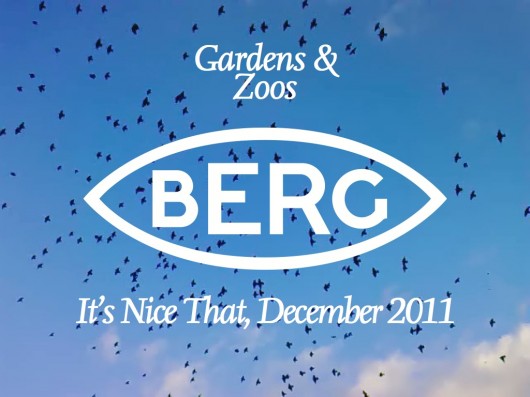

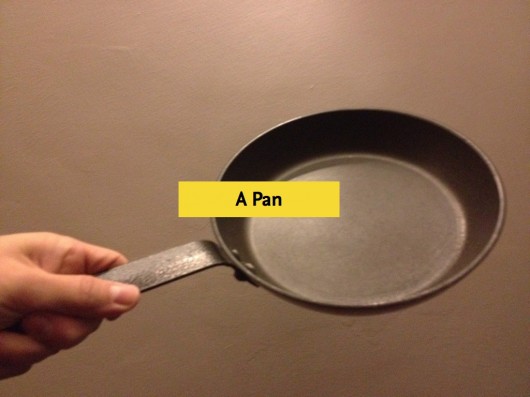
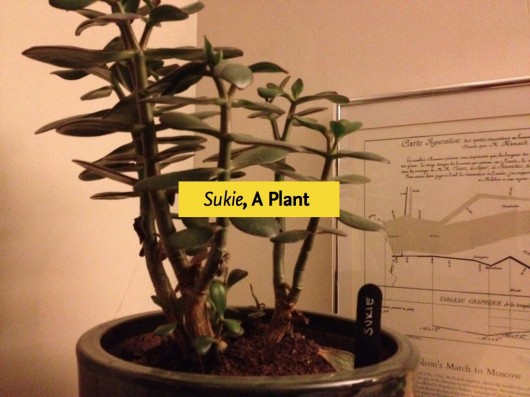
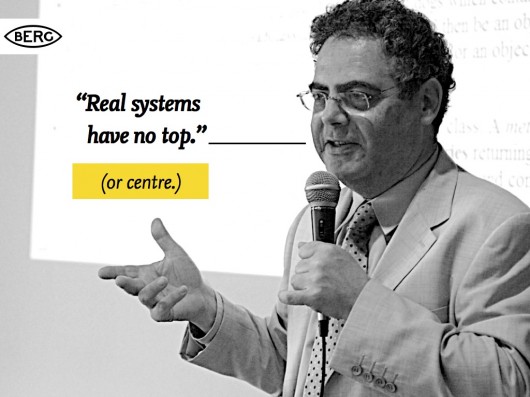
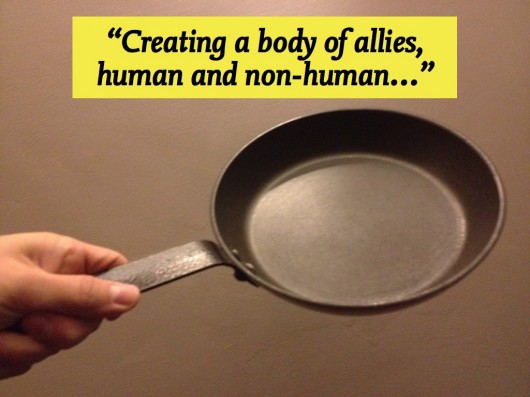
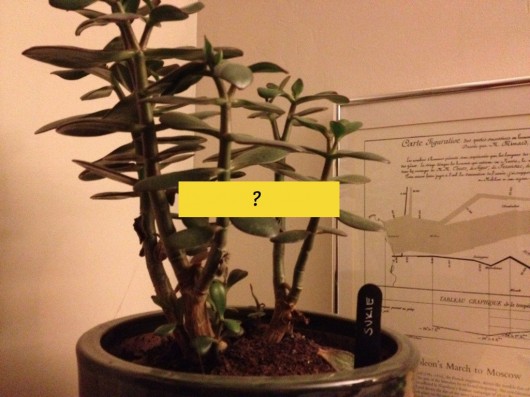
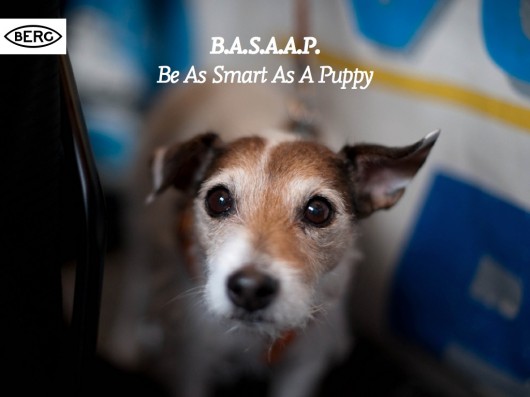
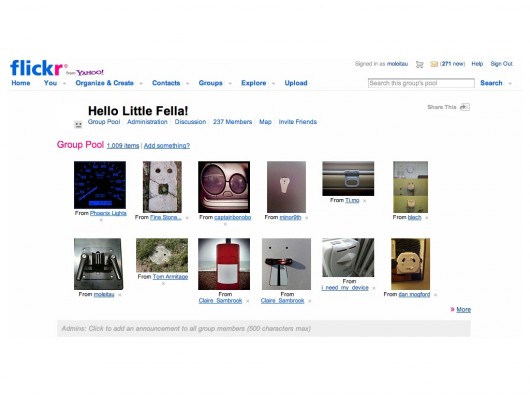
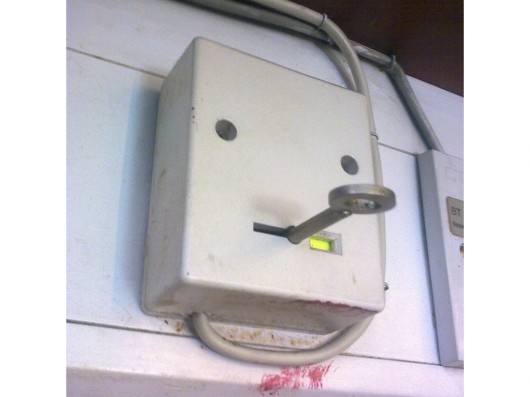
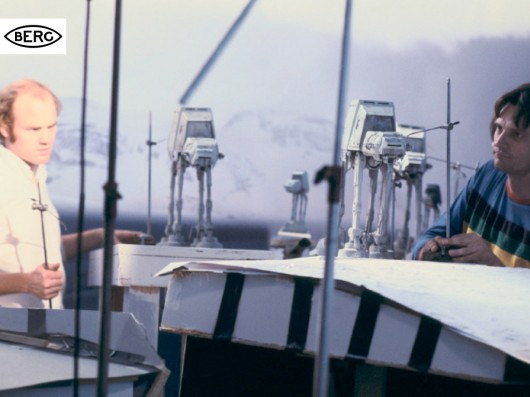
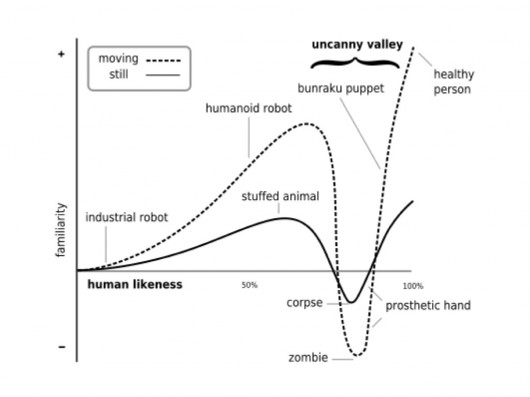
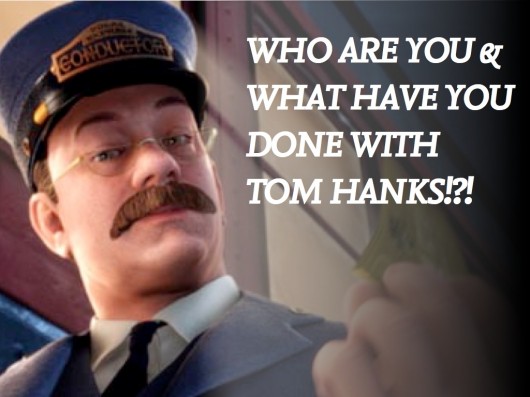
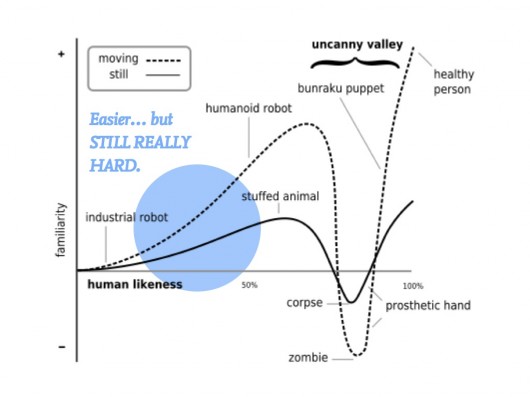
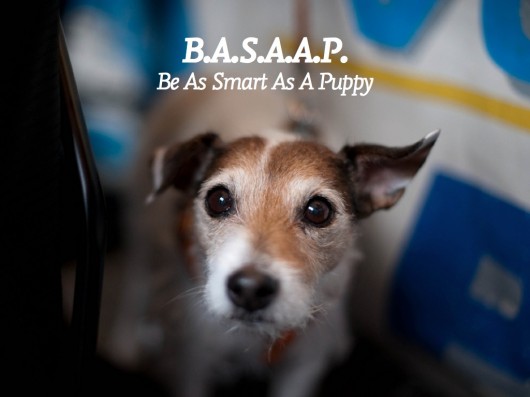
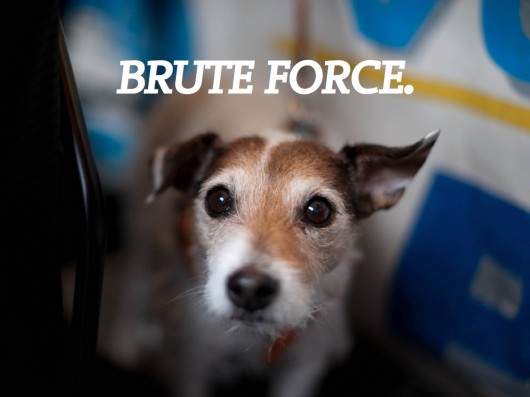
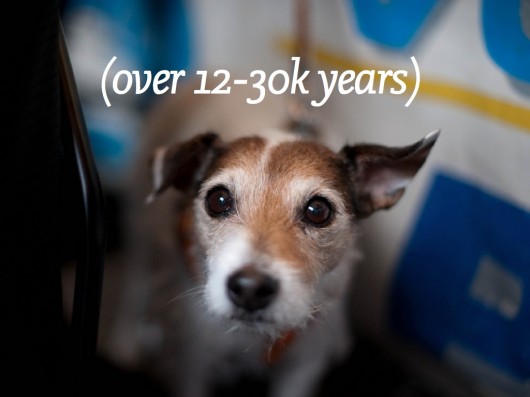
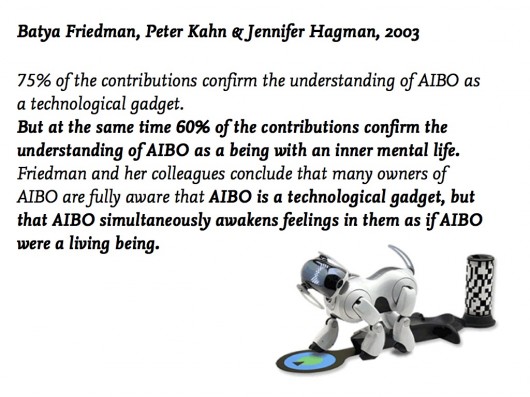
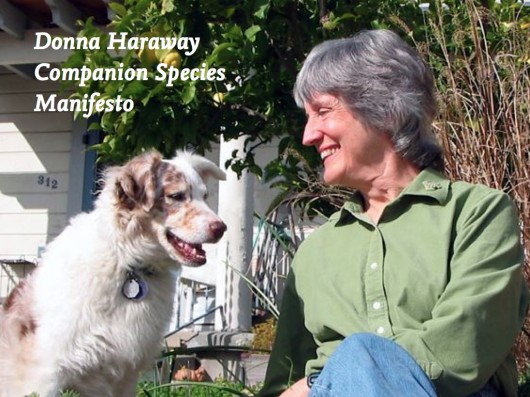
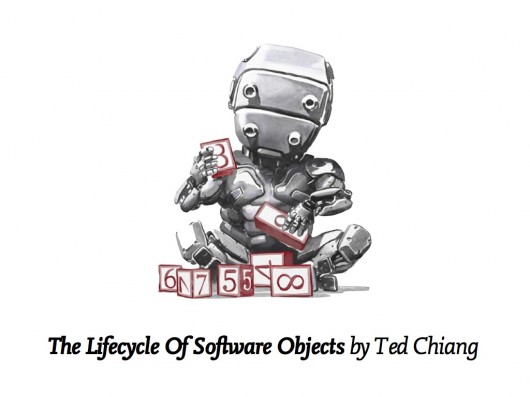
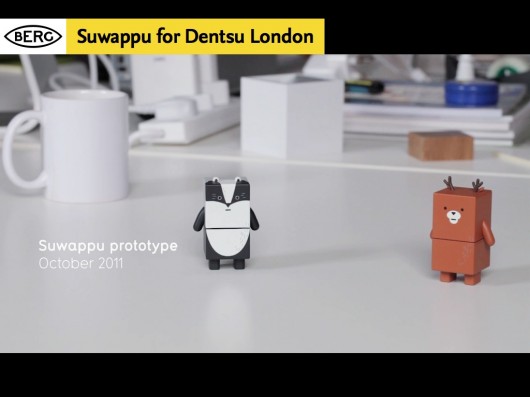
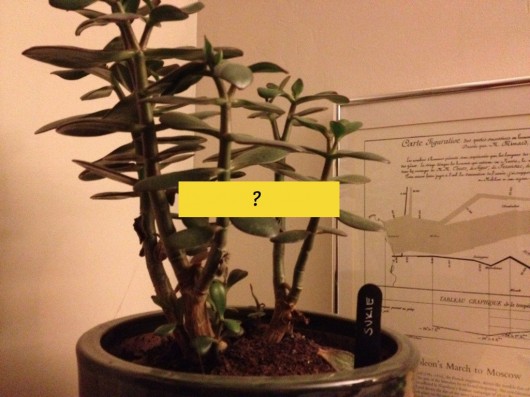
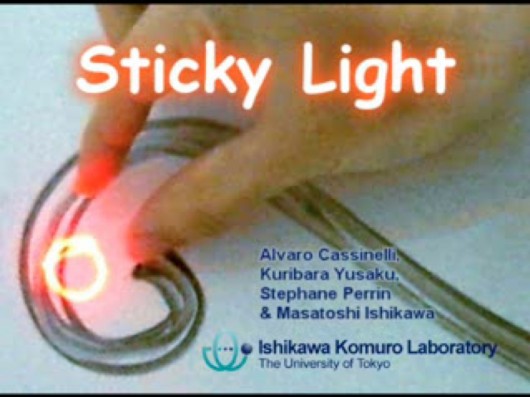
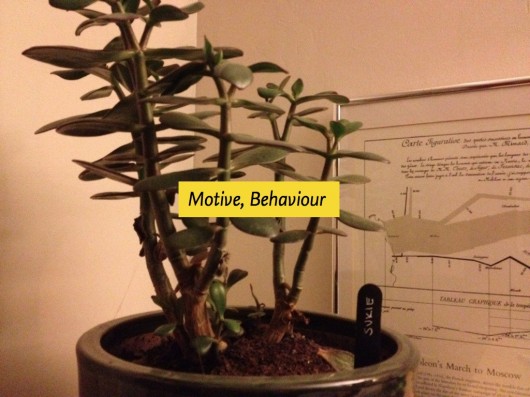
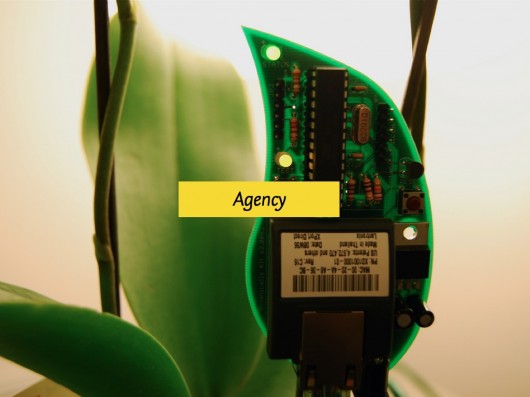
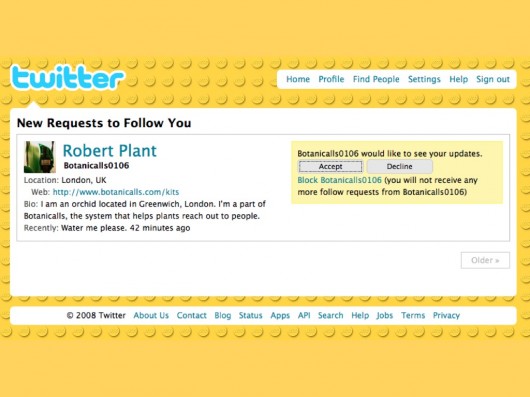
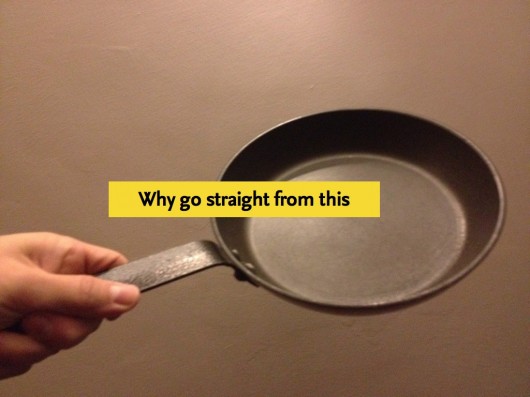

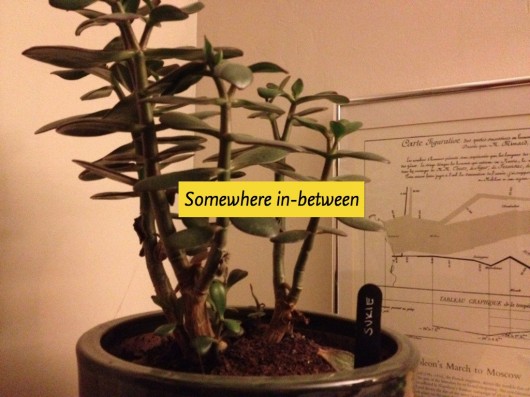
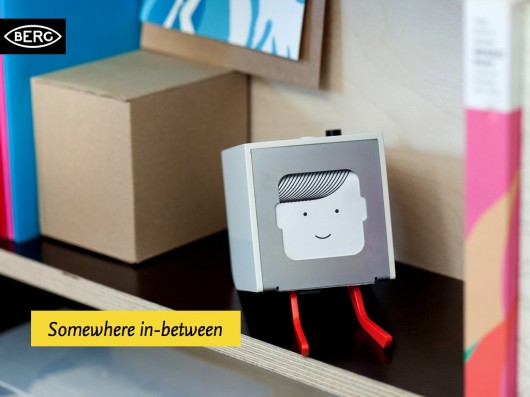
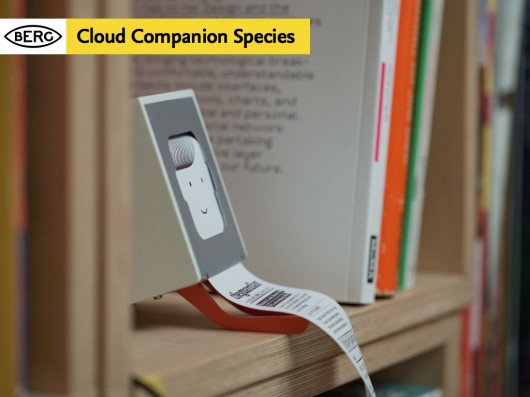
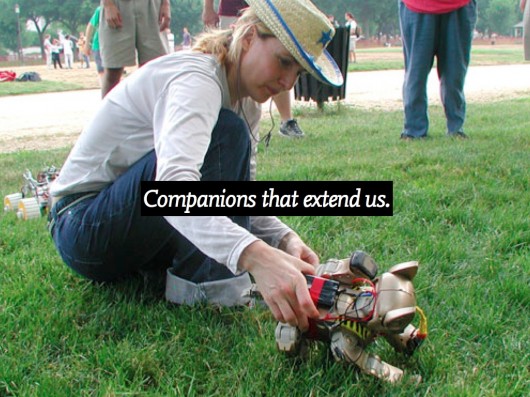
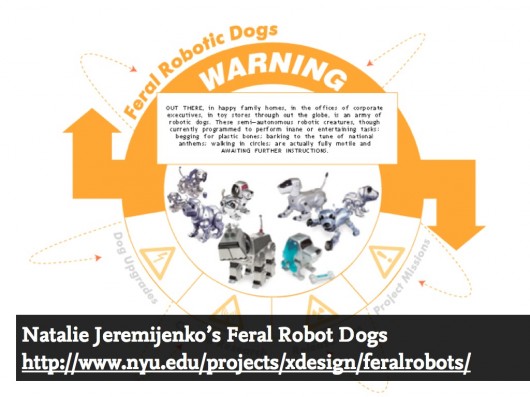
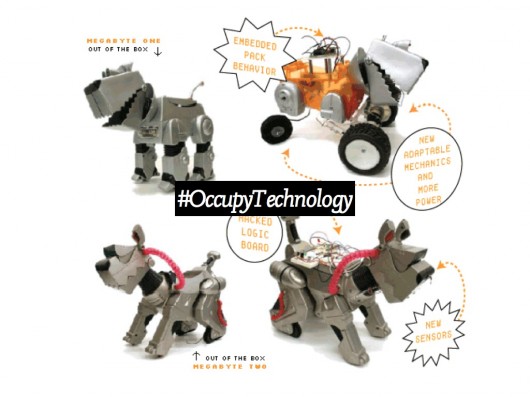
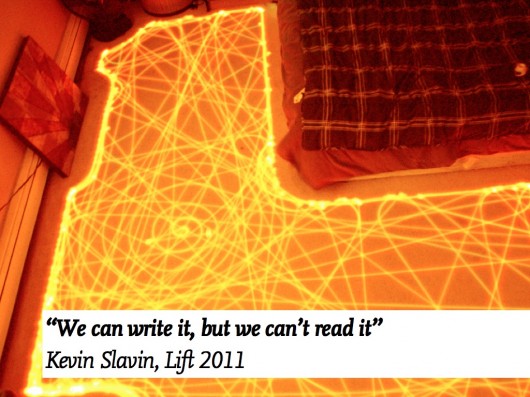
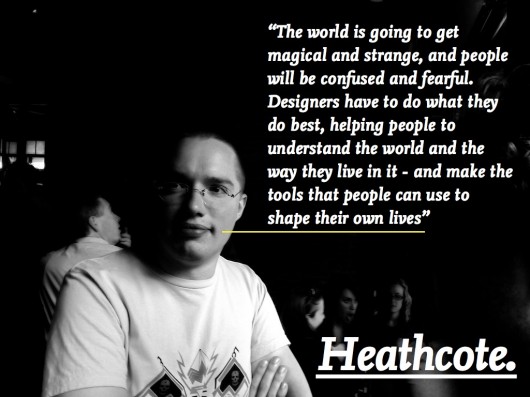

20 Comments and Trackbacks
1. Greg Borenstein said on 6 January 2012...
Great stuff, Matt. I’m especially excited to see you talk about ANT. I’ve been digging into Object-Oriented Ontology a lot this winter break (reading Harman’s Prince of Networks) and have been finding it incredibly productive for this kind of thinking. Any philosophy where algorithms, chinese food containers, social networks, and hockey teams all have the same ontological status has to be intriguing for designers of embodied personalitied internetworked domesticated thingamabobs.
2. Greg Borenstein said on 6 January 2012...
Oh, also! I desperately want that Star Wars-variant of the Mogwai shirt meme. When does that go for sale? You’d make a killing.
3. Greg Borenstein said on 6 January 2012...
Sorry for the triple hit, but this one really got me thinking. Specifically I’ve been thinking of this Nova Special I watched recently called Dogs Decoded: http://www.youtube.com/watch?v=5rOIRSHoc7k It summarizes a bunch of recent research about how dogs evolved and were bred to be successful companion animals. One segment (partially visible in that YouTube preview) shows an eye-tracking study conducted on dogs. Turns out that when presented with a picture of a human face dogs (unlike any other animal besides people) immediately look at the left side of the face. This is apparently a good way for them to gauge our emotional state.
I wonder if, in addition to the interaction affordances provided by making our technology look to us like animals, if it would be useful to think of the way they see us in terms of these kinds of evolutionary analogies. This is very on point with the how-the-bees-see-the-flower stuff from the Robot-Readable World, but maybe what I’m picking up from this is an extension of it that makes it more emotionally warm. Rather than imagining these robot eyes as alien or insectoid you’ve now got me imagining them as companion mammals, reading our feelings to react to us, largely to show companionship. It makes me want them to be warm and wet so that we want them physically near rather than cold and iPhone-like. Maybe if my MacBook’s power brick was furry I’d feel even better about warming my feet on it on cold January nights.
4. Chris said on 6 January 2012...
There seem to be three books about how house plants happened (and I guess central heating played a large part in moving ornamental plants from plant houses to house plants) – Potted Histories by Paul Simons and John Ruthven (also a BBC TV series in the 90s with Greg Proops!), Potted History by Catherine Horwood, and Once upon a Windowsill: A History of Indoor Plants by Tovah Martin. I guess you could also look at the formalised beauty and aspiration of perfection in bonsai as well.
5. Ankkit said on 6 January 2012...
A brilliant post. Feels like I grew*
*http://goo.gl/jv1fw
6. Fiona Romeo said on 6 January 2012...
It’s not specifically about pot plants but in The Secret Life of Trees – on our bookshelf – Colin Tudge talks about how trees influence their environment using chemistry. Trees compete for light, discourage predators, recruit animals to facilitate their reproduction process… http://www.amazon.co.uk/Secret-Life-Trees-Penguin-Science/dp/0141012935
The Ape and the Sushi Master – also on our bookshelf – must also be read! http://www.amazon.co.uk/Ape-Sushi-Master-Reflections-Primatologist/dp/0713995696
7. Fiona Romeo said on 6 January 2012...
Oh, and Lauren Beukes’ Zoo City (on my Kindle) has a very different take on Pullman’s daemons, http://angryrobotbooks.com/our-authors/laurenbeukes/zoo-city/
8. Tim Wright said on 6 January 2012...
Fantastically interesting post. Thank you! The houseplant stuff has got me thinking. This *might* have something to do with increased regulation of the indoor environment over the decades/centuries – stoves, air conditioning, big windows, ventilation etc.
Aspidistras are a good example, maybe, of how a house plant could be used to show that a (Victorian) home had become well-serviced, comfortable and *respectable*. I guess the whole cult of exotic plant collecting plays a part too.
In this context I think Reyner Banham is always interesting. You’ve probably already read “The Architecture of Well-Tempered Environment”. It’s a great book, if you haven’t. He did a lot of work on how mechanical services affected/effected architecture in 50s, 60s & 70s. Your post makes me thing there’s a new range of web-related info-mechanical (bio-info- mechanical?) services that might be doing the same thing to the way homes and buildings in general develop in the the decades to come.
cheers
timw
9. Tom Hume said on 6 January 2012...
Lovely stuff – thanks
They’re mentioned in your Uncanny Valley graph, but I think there’s something very interesting about puppets in relation to this stuff. They’re a technology which has encouraged, and made great play with, that willing suspension of disbelief on the part of an audience. Given how old puppeteering is, I can’t believe there isn’t some interesting theory in it. A great excuse to scrutinise old Muppets episodes too.
A friend who’s spent more time with puppets than I recommended looking into cultural theory on ‘the carnivalesque’ by Bakhtin – and Deleuze/Guattari on replicants and simulacra.
10. John Dodds said on 6 January 2012...
I’m not sure how true this is but I have some recollection of hearing of house plants as ostentation existing in Elizabethan times – ie plants acquired from explorers that had to be kept indoors because of climatic requirements.
Pedantic point: you underestimate your role in the process when you say your pan “is very good at making omelettes” – it’s interesting how often we all do that.
11. AG said on 6 January 2012...
Lovely thinking, Matt, as always, but I’ll confess that I didn’t get even a third of the way through my second, closer pass before getting hung up here:
“By bot – I guess I mean a piece of software that displays a behaviour, that has motive and agency.”
…and later, your characterization of the ordinary pan as lacking agency.
I hope you understand that I’m taking your argument seriously by taking issue with these characterizations, because I believe both that you’re not entirely correct, and that it matters to the success of the point you’re building toward.
Here’s what I think: I think all software always already has agency. Even software in alpha, even software that will never ship, even software that hasn’t yet been compiled. And the pan? It certainly does.
I’m not insisting on these things to fly the flag of an orthodox Latourianism — because who cares — but because my engagement with Latour’s thinking over a couple of years finally convinced me of this. I understand agency as the ability to do some, any, kind of work in the world, and I think *you’re* using the word to mean something closer to “autonomy,” or the ability to independently initiate action.
Again, I don’t think this is a semantic quibble, because it really affects your characterization of software-driven actors. Similarly, I don’t think it’s quite correct to ascribe “motive” to software. I think the designers of software certainly have motive(s), as do the people (“users”) who engage software-driven systems to operate on their behalf. This is Winner’s politics — which politics, as Latour points out, are often thwarted by the agency (there’s that word again) of the artifact in which they’re ostensibly embedded.
And the reason I think it matters to your argument is that I’d wager different strategies necessarily apply to the enlistment of ordinary actors (i.e. those with agency, i.e. everything) than one would use to enlist autonomous actors as allies.
Just a thought.
12. JamesB said on 11 January 2012...
I love your approach to thinking through design. I’m a fan of Latour (but not a ANT zealot) and I think the approach he proposes is excellent as a way to understand the world but also helpful to design.
Firstly, it makes us look and describe the way things (human and non-human) relate in order to understand them, we don’t bring any assumptions to the interaction; it’s a flat ontology (sounds, documents, actions etc are all treated similarly).
Secondly, the strategies to manage these relationships can be seen as cultural invention, as design. Latour has a great phrase that encapsulates how he thinks about technologies – “technology is society made durable” – it’s more of a system than a thing and it seems to me that’s what you’re doing too, you’re trying to make durable relationships and create a system. Enrolling things to work together effectively enables cultural / behavioural change.
Looked at this way you’re designing strategies for your little printer fella to have durable relationships with both the wifi router and handshake protocols, the different APIs to provide relevant data, the printer roll (a standard format I presume), ‘architecture’ (affording it the right size and shape to sit well in the living space) and with humans who want to see a friendly face and relate to dog-like sentience. Enrolling these different things well is the designers roll and provides us with power to do things differently (perhaps to filter and see less in the case of a paradox of choice, or enable control at a distance in the case of Sky+ app recording content to watch later or near field receptors for tracking parcels). Basic superpowers.
One thing that your world of connected puppies seems to suggest though is that we’d need a lot of them. They all seem like one-trick-pony-puppies. Do you see an army of these things with a service economy of puppy fixers and puppy psychologists to tend to their needs?
13. Julian Bleecker said on 13 January 2012...
Fab. Thanks for this. Great fun stuff. It’s nice to see all the ways that ANT and design are coming together — and how design continues to evolve beyond humans, users and the like.
Awhile ago Nicolas and I worked on getting a dog to play World of Warcraft, back when everyone was hopped up on WoW cause Joi was playing it.
The evolution of the bot to something in the uncanny valley has another exemplar in Jayne Vidheecharoen — a new Near Future Laboratory associate’s project — called Customer Service Romance. Worth a spin!
http://nearfuturelaboratory.com/2011/04/17/the-uncanny-valley-of-the-ivr-bot/
And then Jed Berk, who created the Blubber Bot networked blimps imagined them as floating whales/pets. In fact — they all had peculiar personalities that were manifestations of “bugginess” in the firmware!
http://nearfuturelaboratory.com/2007/07/01/blimps-to-teach/
http://goo.gl/8jN1Y
And six years ago after Nicolas Nova and I ran a workshop on Things that Blog / Blogjects, the Near Future Laboratory published this modest Manifesto pointing to some similar projects and influences — especially Latour and Haraway.
http://nearfuturelaboratory.com/2006/02/26/a-manifesto-for-networked-objects/
Keep ’em coming.
Julian
14. Fran Barton said on 24 January 2012...
I just came across this quote from Karl Marx that Walter Benjamin cites in the “Passagen”…
“In a practical sense, I can behave in a human way toward an object only when the object behaves in a human way toward human beings”
and thought of this post.
Marx, quoted in Benjamin (GS, V, p.277), quoted in Buck-Morss, 1989, p352
15. raimund said on 5 April 2012...
Thank you for this.
Have you seen sigfried geidion’s Mechanization Takes Command?
It imbues still things with agency.
Thanks again,
R.
Trackback: Top 10 links for January 3rd through January 12th « Stuart Curran's blog 13 January 2012
[…] Gardens and Zoos – Blog – BERG – […]
Trackback: Augmented Vision » Robot Readable World 21 February 2012
[…] from computer vision research to explore how machines are making sense of the world. As robots begin to inhabit the world alongside us, how do they see and gather meaning from our streets, cities, media and from us? Machines have a […]
Trackback: ANT: A Shift Away From User-Centered Design • Nate Archer.ca | Nate Archer.ca 9 May 2012
[…] that is practically heresy in the design world. The reference I lost and re found was part of a presentation recently given by BERG’s Matt Jones. The presentation is quite complex and introduces a lot of new approaches to technology design and […]
Trackback: The beginning of BotWorld « Magical Nihilism 15 February 2013
[…] poked at it as well, in my talk building on Matt Webb’s thinking “Gardens & Zoos” about a year ago – suggesting that Little Printer was akin to a pot-plant in it’s […]
Trackback: What I Heard at Interaction13 | Antlers and Anchors 21 March 2013
[…] I won’t digress into the topic of “beautiful seams” vs. “transparency”, as raised both here and here by BERG-ians, but I think both Hartman’s and Diana’s talks dovetailed with that […]